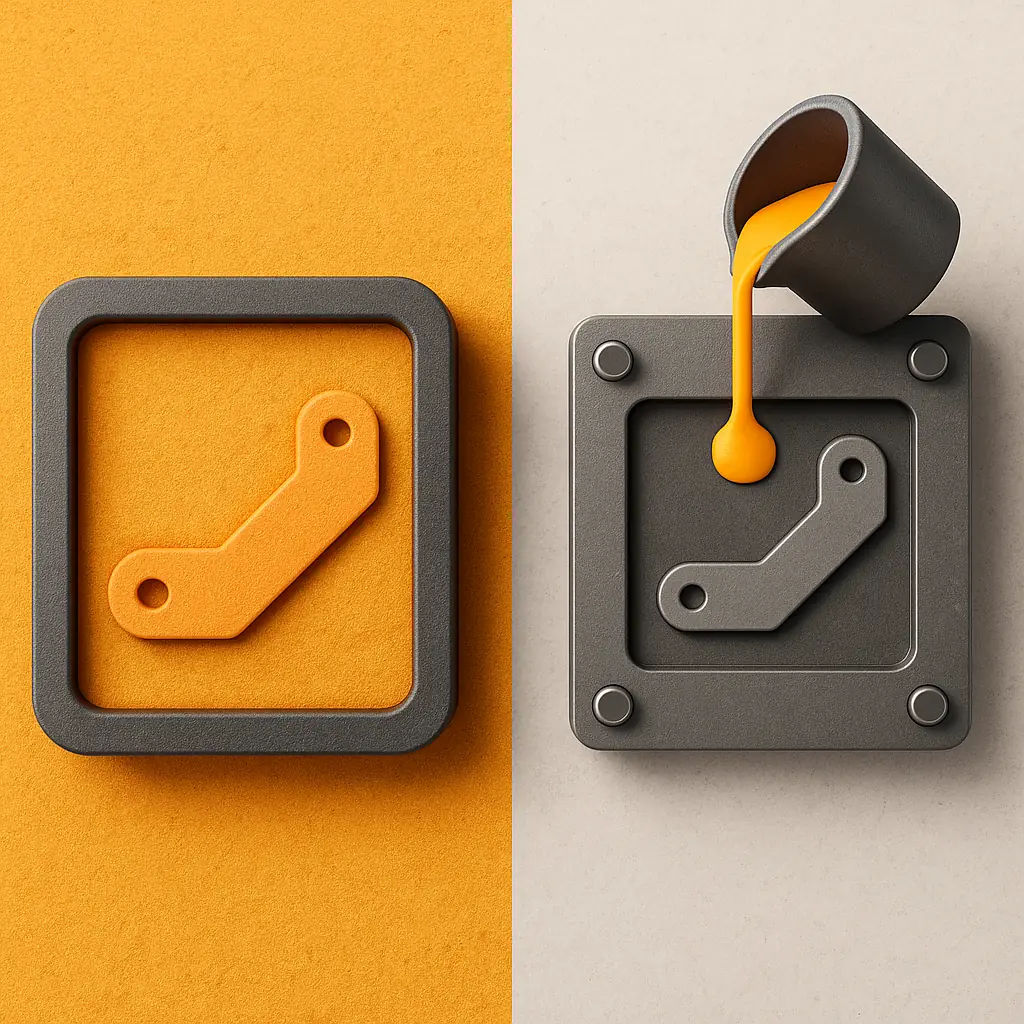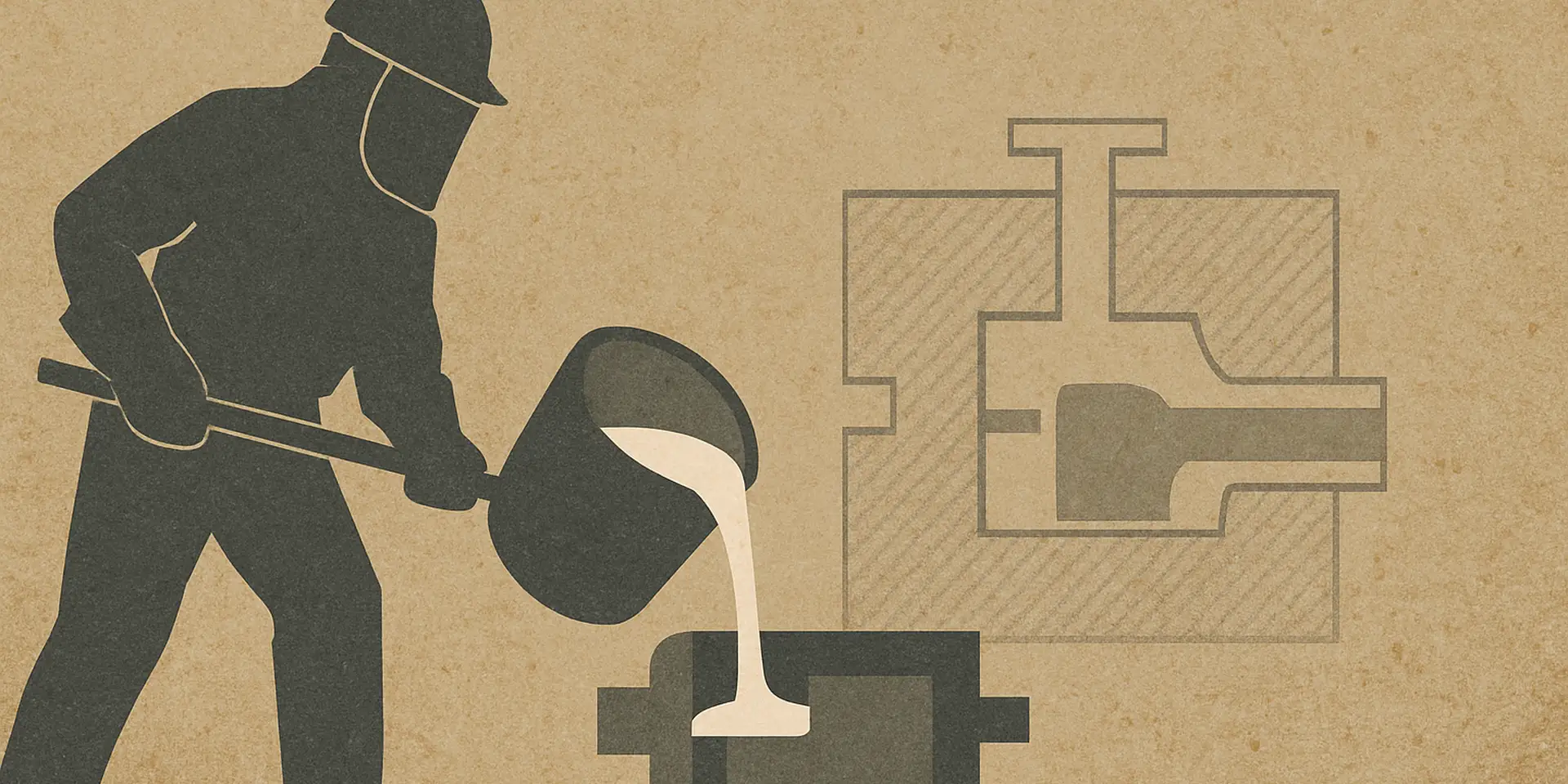Gusseisen vs. Stahlguss: Hauptunterschiede und Anwendungen
Choosing between cast iron and cast steel is more than a technical decision — it directly influences the performance, durability, and cost of your industrial parts. While both materials are ferrous alloys and can be cast into complex shapes, they differ significantly in their composition, mechanical behavior, and best-fit applications.
In this guide, we compare cast iron and cast steel across key factors — from microstructure and strength to cost and real-world performance — helping you make the right material choice for your manufacturing needs.
What Is Cast Iron?
Cast iron is an iron-based alloy with a high carbon content (typically 2.5%–4%). This excess carbon forms graphite flakes or nodules during solidification, giving cast iron its unique properties. It is known for:
- Excellent castability
- High wear resistance
- Vibration damping ability
- Brittle fracture behavior
Types of Cast Iron:
- Gray Iron: Contains flake graphite; excellent machinability but brittle.
- Ductile Iron: Contains spheroidal graphite; more ductile and impact-resistant.
- White Iron: Contains cementite; extremely hard and wear-resistant, but very brittle.
What Is Cast Steel?
Cast steel is a steel alloy with a lower carbon content (typically 0.1%–0.5%) and higher alloying flexibility. Unlike cast iron, it solidifies with a more uniform structure, resulting in:
- Higher strength and ductility
- Good weldability
- Better shock resistance
- Greater toughness under stress
Common Types:
- Carbon Steel Castings: Affordable and versatile
- Low-Alloy Cast Steel: Improved strength and toughness
- Stainless Cast Steel: For corrosion-resistant applications
Cast Iron vs Cast Steel: Performance Comparison
| Property | Gusseisen | Cast Steel |
|---|---|---|
| Carbon Content | 2.5% – 4.0% | 0.1% – 1.0% |
| Tensile Strength | Lower | Higher |
| Impact Resistance | Poor | Excellent |
| Hardness | High | Medium |
| Machinability | Excellent | Moderate |
| Weldability | Poor | Good |
| Damping Capacity | High | Low |
| Corrosion Resistance | Moderate (can rust) | Variable (depends on alloy) |
| Casting Ease | Very good | More difficult |
| Cost | Lower | Higher |
Processing & Fabrication Differences
Cast Iron:
- Easier to cast into intricate shapes with tight tolerances.
- Difficult to weld or reshape after casting.
- More brittle — cracks under dynamic or tensile stress.
Cast Steel:
- Tough and ductile — suitable for components exposed to vibration or impact.
- Can be welded, heat-treated, or reshaped post-casting.
- Typically requires more expensive alloys and controlled pouring.
Cost Considerations
- Gusseisen is generally cheaper to produce due to lower melting temperatures and simpler alloying.
- Cast Steel has higher production and post-processing costs but may reduce total lifecycle cost in heavy-load environments due to lower failure rates.
Real-World Applications
🔧 Cast Iron Applications
Cast iron is ideal for components that require:
- Good vibration damping
- Mass production at low cost
- Intricate shapes with fine detail
Typical examples:
- Engine blocks and cylinder heads
- Machine tool bases
- Brake rotors and drums
- Manhole covers
- Cookware (pans, stoves)
🏗️ Cast Steel Applications
Cast steel is preferred when:
- High strength and toughness are essential
- Weldability or post-machining is needed
- The component faces dynamic or impact loading
Typical examples:
- Excavator and bulldozer arms
- Bridge and infrastructure supports
- Mining equipment (crusher housings, shovel links)
- Pressure vessels and valve bodies
- Offshore and marine components
Case Study: Choosing the Right Material
A pump housing used in mining operations may experience high abrasion and corrosion.
Gusseisen offers wear resistance and cost-effectiveness, but if shock loads are frequent,
Cast Steel is the safer long-term choice despite higher initial cost.
How to Choose Between Cast Iron and Cast Steel?
Choosing the right casting material depends on your project’s functional demands, budgetund processing needs.
| Selection Criteria | Gusseisen | Cast Steel |
|---|---|---|
| Carbon Content | 2.5% – 4% | 0.1% – 1.0% |
| Tensile Strength | Lower | Higher |
| Shock Resistance | Poor | Excellent |
| Weldability | Very limited | Good |
| Machinability | Excellent | Moderate |
| Corrosion Resistance | Moderate (can be alloyed) | Can be improved with stainless grades |
| Cost | Lower | Higher |
| Casting Precision | High (better detail retention) | Moderate |
Material Decision Guide
- High Shock Load or Dynamic Stress? → Choose Cast Steel
- Need High Mold Fidelity and Damping? → Choose Gray Cast Iron
- Cost-sensitive Mass Production? → Cast Iron is more economical
- Parts that require welding or modification? → Cast Steel is more versatile
Summary Table by Use Case
| Application Scenario | Recommended Material |
|---|---|
| Heavy structural parts | Cast Steel |
| Intricate shapes with fine detail | Cast Iron (Gray or Ductile) |
| Vibration damping (machines) | Gusseisen |
| Parts requiring welding/repair | Cast Steel |
| Corrosive environments | Stainless Cast Steel |
Conclusion
Choosing between cast iron and cast steel isn’t simply about chemical composition — it’s about aligning the material’s characteristics with your performance, durability, and cost objectives.
- If you’re designing parts that require high wear resistance, excellent vibration dampingund low production cost, Gusseisen is a strong candidate.
- On the other hand, if your project demands structural toughness, shock resistance, or modifiability through welding, then cast steel will better meet your needs.
Need Expert Help?
Still unsure which material fits your application best?
📩 Contact our engineering team to receive personalized advice and help choosing the ideal casting solution for your product.
👉 Get in touch with us today to start your next casting project with confidence.


